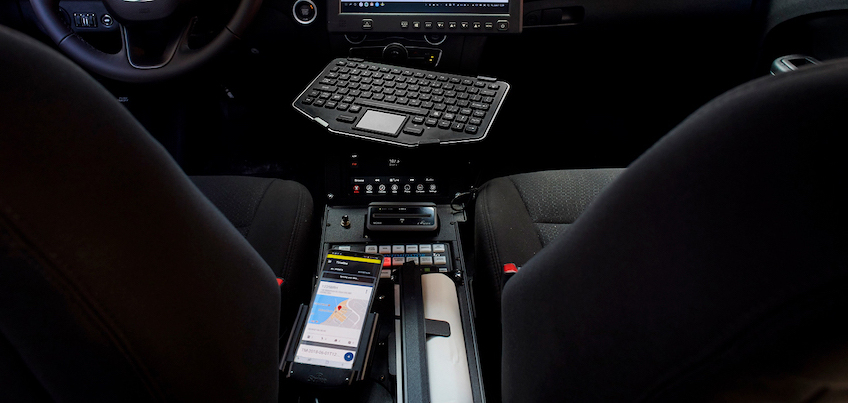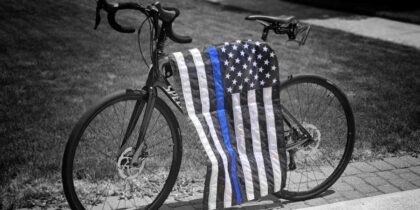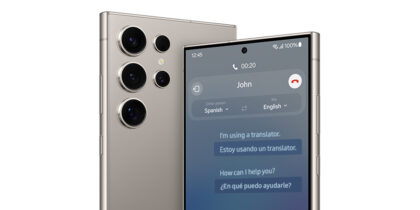Law enforcement agencies are increasingly embracing the concept of a connected officer, supported by mobile technology and apps. With a strategic smartphone deployment, these frontline agencies have the power to expand their operational capabilities and offer rich data insights for their officers — regardless of their location or their proximity to a patrol vehicle. They can access mission-critical information, including background checks, photos, videos and detailed schematics on demand, without having to contact dispatch.
As agencies look to mobilize officers with smartphones, they face an immediate choice between device types. On the one hand, they can choose high-performance devices like Samsung’s Galaxy S21 and the Galaxy S20 FE, which can both deliver powerful compute capabilities with Samsung DeX. On the other hand, they can choose the rugged devices like the Galaxy XCover Pro, which is optimized for heavy-duty outdoor use, with features like push-to-talk (PTT) accessible at one click of a button on the phone case.
As you consider deploying new smartphones to support your public safety personnel, make sure you’ve accurately assessed their work environment and unique operational needs. Here are 10 key factors to consider in choosing a new phone for your agency:
1. Durability
Among the most significant choices in a smartphone deployment is the device’s durability. Most devices can be outfitted with rugged cases, which provide enough protection for many situations, but rugged phones like the Galaxy XCover Pro are a different class of device altogether. Samsung designed the XCover Pro to meet the durability standards of the U.S. military. The device has passed 22 tests to attain MIL-STD-810 certification, including repeated drops, submersion in water, extreme temperatures, high altitudes, rain and salt spray.
2. Display quality and size
Providing smartphones for officers is the best way to connect them to versatile communication tools and a full range of apps for computer-aided dispatch (CAD), record search and situational awareness. For a display that makes app screens easy to read, consider the S21 series, whose displays range from 6.2 inches (on the S21) to 6.8 inches (on the S21 Ultra). The S21 line uses Super AMOLED screens for superb brightness, with hardware protection provided by Gorilla Glass Victus.
If you prefer a rugged device, the XCover Pro provides a 6.3-inch edge-to-edge display that uses thin-film-transistor technology and is protected by Gorilla Glass 5. It’s designed to remain operable while an officer is wearing gloves or working in the rain.
3. PTT capabilities
PTT is highly practical in public safety, and major carriers are optimizing their networks for mission-critical PTT (MCPTT). Over-the-top PTT apps can run on most smartphones, but devices like the Galaxy XCover Pro — with its programmable side key — make PTT more convenient and seamless. PTT on mobile allows officers to take advantage of not just 1:1 calls but also instant group conversations, chat and file sharing. The Galaxy S21 can also support PTT apps with a soft button on the screen.
4. Battery life
Public safety officers rely on their devices to provide all-day performance, so battery life is one of their biggest concerns. Both the S21 line and the XCover Pro come with long-lasting, fast-charging batteries, but they have some differences. Battery capacities range from 4,000mAh (on the S21) to 4,050mAh (on the XCover Pro) and 5,000mAh (on the S21 Ultra). The XCover Pro also comes with a field-swappable battery and heavy-duty pogo pin connectors that make it easy to pop into a multidevice charger.
5. Performance and storage
Processing speed and memory configuration (RAM) are important considerations for officers who run performance-intensive apps or multitask across apps. All of the phones discussed above use 64-bit Octa-core processors, but the S21 offers higher processing speed and more memory, ranging from 8GB to 16GB of RAM on the high-end S21 Ultra model. The rugged XCover Pro, by contrast, has 4GB RAM.
For officers storing large amounts of data on their device, adequate internal storage is critical. Again, the flagship S21 devices lead the way, with 128GB on the standard model and up to 512GB on the high-end model. The XCover Pro comes with 64GB of internal storage, but also features a microSD slot which allows storage to be expanded to up to 512GB.
6. Photo and video capture
Both the S21 line and the XCover Pro allow officers to capture high-quality photos and videos, but the S21 line offers more for agencies who need the highest-quality videos. The S21 series’ photographic capabilities rival some of the finest digital cameras ever made. The ultra-wide, wide and zoom lenses on the S21 enable officers to choose the field of view that best suits the situation — particularly helpful in a confined space, where a wider field of view makes for easier documentation. The relatively large apertures on the S21 are useful for documenting evidence in low light, when using flash is impractical. Compared to previous Galaxy smartphones, these cameras also use larger pixels, which absorb more light, further improving photo quality in low light.
Your guide to mobilizing law enforcement
The best smartphone for public safety: Improving efficiency while meeting operational needs. Download Now
When it comes to recording video, the S21 supports 8K video, as well as 4K UHD and lower resolutions. With high-resolution video capture, officers can pull high-resolution stills — up to 33MP — which can help organize the elements of a crime scene.
The XCover Pro has two rear-facing cameras — a 25MP wide and 8MP ultra-wide — along with a 13MP front-facing camera. It supports Full HD video capture (up to 1920×1080) at 30 frames per second (fps) from any of its three cameras.
7. Defense-grade security
Mobile security is especially important for phones that store data subject to Criminal Justice Information Services (CJIS) policy. The S21 series and the XCover Pro maintain the Samsung Galaxy standard of defense-grade Knox security built in from the chip up. The Knox platform provides comprehensive security and device management protocols in the hardware, operating system (OS) and application layers, guarding against malware and data breaches and even protecting lost or stolen devices.
8. Convenient and effective fingerprint ID
An innovative ultrasonic fingerprint sensor is embedded in every S21 series display — but it doesn’t impair the screen. Ultrasonic waves map your fingerprint instantly, even if it’s damp or a bit oily. The ultrasonic approach also improves biometric recognition when you’re operating in bright sunlight or low temperatures. Samsung’s ultrasonic fingerprint reader was the first of its kind to receive biometric component certification from the FIDO Alliance.
The XCover Pro uses an innovative, quick-to-operate approach that integrates a capacitive fingerprint reader into the power button. This allows an officer to draw their phone from their belt and have it unlocked by the time it’s in front of them.
9. A replacement for the in-vehicle laptop
Thanks to the power of Samsung DeX, you can confidently replace an existing in-vehicle computer with any of the Galaxy S21 models. Back at the station, officers can use DeX to pair their phone with a larger display and dedicated keyboard — replacing their conventional desktop computer. Not only does this increase operational efficiency, but a recent study by the Public Safety Network shows that transitioning to a mobile-centric workforce can reward agencies with significant budget savings. The rugged XCover Pro is not DeX-enabled.
10. Dedication to public safety
Public safety devices need to be backed by a reliable manufacturer. Samsung has supported public safety for years by providing smartphones and other mobile solutions that improve critical information access, productivity and safety, regardless of the assignment. What’s more, Samsung has partnered with leading public safety software vendors to develop apps that are fully outfitted for highly mobile work environments — even optimizing these apps for in-vehicle computing with DeX.
Before buying your next fleet of smartphones, take a close look at how your employees will use their phones. Would they benefit more from the high performance of the S21 line, or the durable design of the XCover Pro? Regardless of which you choose, any of the S21 smartphones or the XCover Pro can make your operations more efficient — and fully support your personnel’s computing needs while they’re in the field.
For more expert tips on rolling out a mobile program at your agency, consult Samsung’s free Ultimate Law Enforcement Agency Guide to Going Mobile. Or, if you’re not sure which mobile device is the right fit for your needs, browse Samsung’s versatile range of purpose-built public safety solutions.









